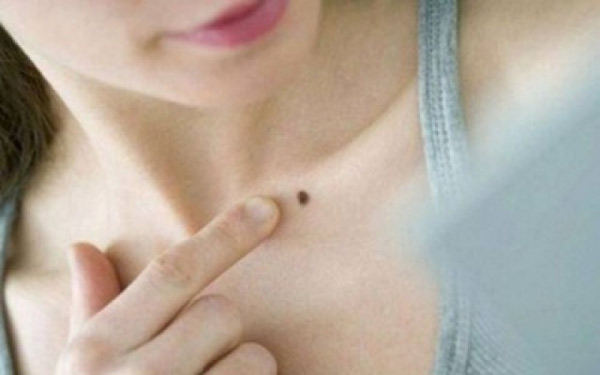 People with more than 50 moles have an increased risk of developing melanoma, the deadliest form of skin cancer, but those with fewer than 50 moles should still be alert for this disease. In fact, according to new research presented at the American Academy of Dermatology’s 2015 Summer Academy Meeting in New York, those with fewer moles may be diagnosed with more aggressive melanoma than those with many moles.
People with more than 50 moles have an increased risk of developing melanoma, the deadliest form of skin cancer, but those with fewer than 50 moles should still be alert for this disease. In fact, according to new research presented at the American Academy of Dermatology’s 2015 Summer Academy Meeting in New York, those with fewer moles may be diagnosed with more aggressive melanoma than those with many moles.
The following Information was provided by board-certified dermatologist Caroline C. Kim, MD, FAAD, director, pigmented lesion clinic, and associate director, cutaneous oncology program, Beth Israel Deaconess Medical Center Department of Dermatology, Harvard Medical School, Boston.
People with more than 50 moles may be more aware of their skin cancer risk and more likely to visit the dermatologist for screenings, Dr. Kim says. In treating advanced-stage melanoma cases, however, she observed that patients with fewer moles tended to have more aggressive melanoma than those with many moles.
To investigate the differences in melanoma between these two groups, Dr. Kim and her colleagues reviewed the charts of 281 melanoma patients who visited BIDMC in 2013 and 2014. Eighty-nine of these patients had more than 50 moles, while the remaining 192 had fewer than 50 moles.
As Dr. Kim suspected, patients with fewer moles had thicker, more aggressive melanoma than those with many moles. The tendency toward thinner, less aggressive melanoma was observed in patients with both a high number of moles and atypical moles, another melanoma risk factor. Additionally, those with more than 50 moles were more likely to be diagnosed with melanoma at a younger age than those with fewer moles.
Dr. Kim says the results of her research could be attributable to several factors. Health care providers may readily identify patients with more than 50 moles as being at risk for melanoma and educate those patients regarding that risk. As a result, patients with many moles may be more likely to visit a dermatologist for regular skin exams, allowing for their melanoma to be detected at an earlier stage, when it is thinner and less aggressive.
Additionally, there are biologic differences between patients with many moles and those with few moles, Dr. Kim says, and these differences may be responsible for the variations in melanoma between the two groups. “We already know that melanomas are not all the same genetically,” she says. “It’s possible that there are different pathways that drive melanoma in these two patient groups, resulting in different degrees of aggressiveness. If patients with fewer moles are more prone to aggressive melanoma, then we need to make sure that they are also being educated and screened, in addition to patients with many moles.”
Dr. Kim says additional large-scale studies will be necessary to confirm the results of her research. Further investigation into the biology of melanoma in these two patient groups will be important, she says, and research on the benefits of population-wide skin cancer screenings may indicate a need for expanded skin cancer detection efforts.
Skin Cancer Detection
Although certain groups have an increased melanoma risk, skin cancer can strike anyone. “It’s important to educate yourself about skin cancer, no matter how many moles you have,” Dr. Kim says. “All skin cancers, including melanoma, are most treatable when they’re detected early, so it’s important to be aware of warning signs on your skin.”
The Academy recommends conducting regular self-exams to check the skin for suspicious spots, including any moles that exhibit any of the ABCDEs of melanoma:
•Asymmetry: One half of the mole is unlike the other.
•Border: The mole’s border is irregular, scalloped or poorly defined
•Color: The color of the mole varies from one area to another.
•Diameter: The mole’s diameter is larger than 6 mm (the size of a pencil eraser).
•Evolving: The mole’s size, shape or color changes over time.
In addition to the ABCDEs, it’s important to keep an eye out for any spots on your skin that appear different from the others, or anything changing, itching or bleeding. “Watch for ‘ugly duckling’ skin lesions that look out of place, whether they are dark-colored, or pink or skin-colored,” Dr. Kim says. “Any unusual or changing lesion should be examined by a board-certified dermatologist.”
“This research reminds us that everyone needs to be alert for melanoma, whether they have many moles or just a few,” Dr. Kim says. “Make sure you know how to examine yourself for signs of skin cancer, and bring any suspicious spots to a board-certified dermatologist’s attention.”
Story Source:
The above post is reprinted from materials provided by American Academy of Dermatology. Note: Materials may be edited for content and length.